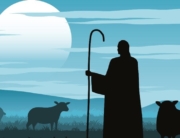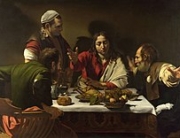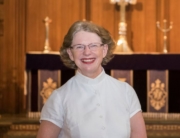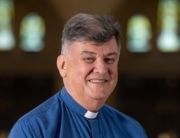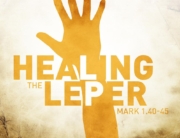Preacher: The Very Rev’d Frank Nelson
Very occasionally I make my way back from the Royal Adelaide Hospital via the Botanic Gardens, enjoying the lush vegetation, the water features, birds and quietness with the bustle of city noise a distant sound. It is always a soul-enriching and life-giving experience. Many of you will have your own similar places of withdrawal, where time can be spent in contemplation of the divine mystery. As I sat with today’s readings I found myself thinking, not of the Adelaide Botanic Gardens but of those in Wellington, New Zealand. Many was the time when I would walk the steep roads up the hill from the Cathedral, well-wrapped against the infamous wind, and into the gardens. No rainbow lorikeets, noisy miners and Murray magpies there, but clergy-collared tuis, chorister-like bell birds and, in recent years, and thanks to mammoth efforts to protect pockets of native bush, the noisy kakas. But it was not the birds, the trees or even the formal rose garden that came to mind through the readings, but a particular piece of sculpture.
The piece I have in mind is Mary-Louise Brown’s monumental stone staircase featuring ten steps. On each step is a word. The first is Body, the last is Soul. By changing only one letter at a time, Mary-Louise takes us from Body to Soul in ten easy steps! As I jotted down words from today’s Collect and Readings I found I began and ended with an “S” word. The first is Sin the last Salvation. No ten easy steps, or anything as simple, or clever, as changing a letter each time, but rather words like mercy, grace and love filling the gap between Sin and Salvation.
Let’s start with the Gospel – today’s snippet offering two of the three stories or parables Jesus told about ‘the lost’. The lost sheep and the lost coin. The third which follows is probably the best known and loved of the three, the lost son. Each, at its most basic, tells the story of the move from Sin to Salvation. Each begins with the devastation of being lost, which, in theological terms, has to do with sin – that sense of separation, alienation, from God. Each ends with a party to which friends and family are invited. Rejoice with me, says the shepherd and the housewife, for that which was lost, is found. Let’s celebrate.
Of course, it’s not that straightforward. Like Mary-Louise Brown’s ten step sculpture there are a few steps in between – the frantic search of the house for the coin, the risky abandoning of the flock to find that one lost sheep. As an aside, after preaching on the parable of the Lost Sheep some years ago one of the church wardens, a sheep farmer, came and took issue with me. Frank, he said, in commercial terms it makes no sense to leave the flock to look for one sheep, or to call the vet out to a sick lamb! But that’s the point isn’t it? There is a cost to finding the lost sheep, the lost coin, the lost son.
St Paul, who describes himself to Timothy as a former blasphemer, persecutor and man of violence, knew very well the cost of being found – and it was not of his paying. Paul uses words like mercy, grace and love of Jesus who, he says, came into the world to save sinners. Over and over again, in his letters to the various churches which have come down to us as the Epistles, St Paul teaches on the meaning of the cross, the willing offering of himself by Jesus to die. Nowhere is this more clearly seen than in the very early Christian hymn, quoted by Paul in Philippians, chapter 2 verses 6 – 8.
who, though he (Christ Jesus) was in the form of God,
did not regard equality with God
as something to be exploited,
but emptied himself,
taking the form of a slave,
being born in human likeness.
And being found in human form,
he humbled himself
and became obedient to the point of death—
even death on a cross.
St Paul understood, from his own conversion, his own radical change of life, the cost of the movement from Sin to Salvation. And he understood full well that the cost was not his but Jesus’s. Later in this service we will sing/say, as we do every week, ‘O Lamb of God, you take away the sin of the world, have mercy on us.’ I venture to suggest that most of the time we do not really think too much about the cost of that mercy, the cost of taking away the sin of the world.
After this service, take a walk into the Chancel and stop near the cathedra, the bishop’s chair. Turn your gaze upwards and northwards to the window above the sacristy and, as you look at Jesus the Good Shepherd, pray the Agnus Dei – ‘O Lamb of God, you take away the sin of the world, have mercy on us’, and be thankful. (Incidentally a scene from that window is being produced as a Cathedral Christmas Card – available soon.)
Sin to Salvation, step by step through mercy, grace and love.
At first it may seem harder to find this word-sculpture in the few verses from Jeremiah, and you may need to go and read the rest of chapter 4, and even the chapters on either side. Jeremiah doesn’t mince his words as he speaks God’s judgment on the People of Israel and Jerusalem.
‘For my people are foolish,
they do not know me;
they are stupid children,
they have no understanding.
They are skilled in doing evil,
but do not know how to do good.’
It’s hard to imagine salvation coming in the description of a mighty army sweeping down from the north, laying waste to, and making void, the earth; the heavens without light, the mountains quaking. This is not salvation but desolation. (Jeremiah 4: 23ff)
“I looked, and lo, there was no one at all, and all the birds had fled … the fruitful land was a desert … its cities in ruins…”
Read on until you find a single three letter word – yet.
“Yet I will not make a full end.”
It’s there buried in verse 27. In the very midst of the devastation and destruction, brought about by the foolish stupid behaviour of those God calls ‘children’ and ‘my poor people’. There’s sadness and puzzlement in God’s voice. It takes us back to Good Friday and the cry of God found in the prophet Micah (6: 3):
O my people, what have I done to you?
In what have I wearied you?
Answer me.
On Good Friday of course, the story ends in death, the death of Jesus on the Cross, the Lamb of God who takes away the sin of the world.
But, thanks be to God, the story does not end on Good Friday – just as the parables of the lost sheep and the lost coin do not end in the despair of the lost. There are steps from Sin to Salvation, not of our own doing or making, but of God’s. In Jesus the Christ we find the mercy, grace and love of God. And that mercy, grace and love is worth celebrating – for the lost are found and the feast of forgiven sinners begins.
The pattern is complete – Sin to Salvation, via mercy, grace and love. Thanks be to God.
Let us pray
Undaunted you seek the lost, O God, exultant you bring home the found: touch our hearts with grateful wonder at the tenderness of your forbearing love; grant us delight in the mercy that has found us; and bring all to rejoice at the feast of the forgiven sinners.
APBA Prayer of the Day pg 583

